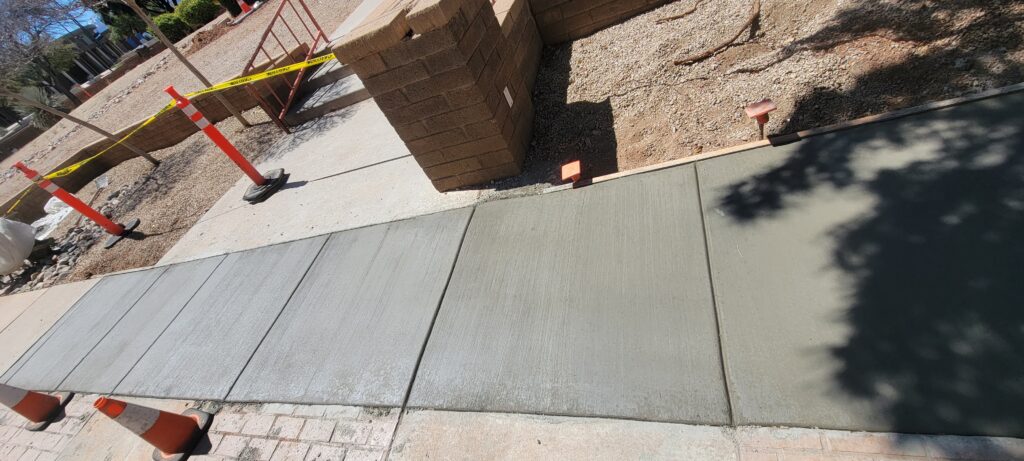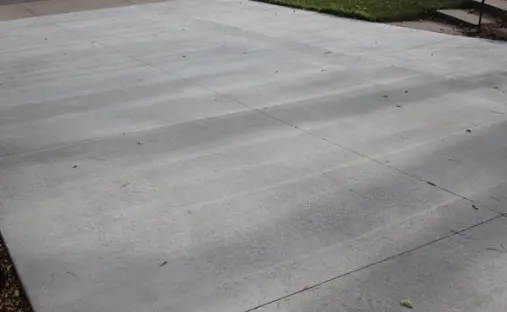3 Easy Steps on How to Repair Cracks in Concrete
Call us at (520) 301-0316

Cracks in concrete are as certain as death, taxes, and the laws of nature. Repairing unsightly cracks or those that are dangerous is easy and inexpensive. Repairing concrete cracks can do more than just improve the look of cementitious buildings. Should they be sealed, patios, driveways, or walkways cannot be penetrated by water.
Any concrete surface will look better and have greater strength thanks to concrete repair. Using the appropriate tools and materials will help you to make sure your concrete lasts for years to come. Hairline fractures or cracks less than 1/4 inch wide can be repaired using these procedures. A closer look is required for anything much larger. Repairing crumbling concrete is a different technique. Follow these simple steps to prevent water from getting into small cracks and weeds from growing through them.
1. Clean
You need to prepare your surface before you begin your Concrete Crack Repair. This will ensure that the repair lasts. Failure to prepare the surface can result in concrete cracking, requiring a new repair. Do not waste time trying to skip the preparation step.
With a masonry tool and hammer, remove anything thin and fragile around the crack (don’t forget eye protection). The crack site should be chipped down to one inch below surface level. Remove old caulk using a metal putty blade. Remove dirt and loose materials from the area around and in the crack using a leaf blower or pressure washer. Utilize a wire brush if needed. Once the region is dry to the touch and clear of all trash and garbage, you can proceed with the following step.
2. Caulk or Mortar
Before caulking, make sure the crack and its surrounding area are dry. Choose a warm, sunny day. For most caulks used to repair concrete, temperatures of 50-100 degrees Fahrenheit are required for adhesion. If the crack is deeper than 1/2 inch wide, fill it with backing rod. Use the right diameter. For cracks in flat surfaces, use gray self-leveling sealant. For cracks on vertical or sloping surfaces, use a viscous non-sag sealant. Sikaflex is a flexible, weather-resistant caulk. Fill the cracks with caulk. Wet your finger, and use it to smooth out any imperfections. You can also use a putty blade (self-leveling sealants shouldn’t require smoothing). Repeat this procedure for each crack measuring less than 1/4 inch in width on driveways, patios, and walkways.
Some larger cracks may be repaired with a mortar mixture. Follow the instructions on the bag to mix it, and then pour it into the crack, using a trowel, to blend it with the existing material. Scrape off any excess material for a smooth, clean finish.
3. Wait
You can step back, pat yourself, and have a drink, but don’t walk or drive on the mortar or caulk until it has cured. Check the packaging for details on cure times. Sikaflex products can be used for light traffic within one to two hours, but not for driving for at least three to five hours. If you’re sealing cracks on a driveway, we recommend doing one side of the driveway at a time to avoid blocking access to your garage. Tire tracks can last for up to five days in caulk joints.
Call us at (520) 301-0316

Driveway Crack Repair
The above steps might not be enough to fix the problem if your driveway has many cracks. Pouring a brand-new pad does not require you to take out the whole one. One method to mend bigger surfaces is concrete resurfacing.
Remember to begin with a flat, clean surface. For a thin layer of cement on your fractured driveway, use microtoppings or concrete overlays. For a unique look, you can stamp or texture the overlay to hide cracks.
Repairing Floor Cracks
Many people like concrete floors since they are contemporary, strong, and lovely. Though they also crack, fixing them calls for some finesse since you want them to seem just as lovely as they were when first poured. Though you should aim to apply and finish the product with a delicate touch, the same steps as above are best. To guarantee the crack-repair product melds perfectly with the slab, you should smooth it out as much as possible. Cracks may be covered so you won’t see that a repair has been done.
Patio Cracks: How to Repair Them
Patios are high-traffic areas and get cracked easily. Small fissures on concrete patios are fixed by following the above steps. This stops weeds, debris, and filth from becoming a nuisance. Epoxy or caulk can be used to fill these little fissures for a long-lasting fix. You might require a concrete repair mix comparable to that used on your driveway for bigger cracks.
Don’t Let Concrete Cracks Get You Down
If you detect fissures in the concrete, don’t give up hope. You do not have to put a new concrete pad in place of the old one. With the right items and expertise, you may mend fissures by yourself.
Fixing fissures in concrete will increase the lifespan and attractiveness of your sidewalks, driveways, and flooring. Caulk keeps water and weeds from entering those bothersome fissures in concrete slabs. Apexx Enterprise LLC can help you with any project. With locations ranging from Tucson, Oro Valley, and Marana, you’re never too far away.
FAQs
Do I need to be concerned about the hairline cracks on my concrete? Do I have to call a professional?
Filling hairline cracks is a good idea to prevent water damage. This 3-step DIY guide shows you how to repair with caulk.
My driveway is full of cracks. Resurfacing is the only solution.
Not necessarily! In the blog, we explore patching techniques to repair smaller cracks as well as resurfacing larger areas.
What if I use the wrong product? What kind of caulk should I use?
The size and location of the crack will determine which caulk to use. For flat surfaces, we recommend non-sag caulk. Visit our guide to find specific product recommendations!
How long will it take before I am able to use my driveway?
Patience is the key! The cure time will vary depending on the product. Please check the product packaging for the exact cure time.
My concrete floor has cracks. Repairing them will they damage the finish?
If done with care! This guide stresses the importance of a delicate finishing touch when it comes to floor repairs. It is possible to blend seamlessly!
